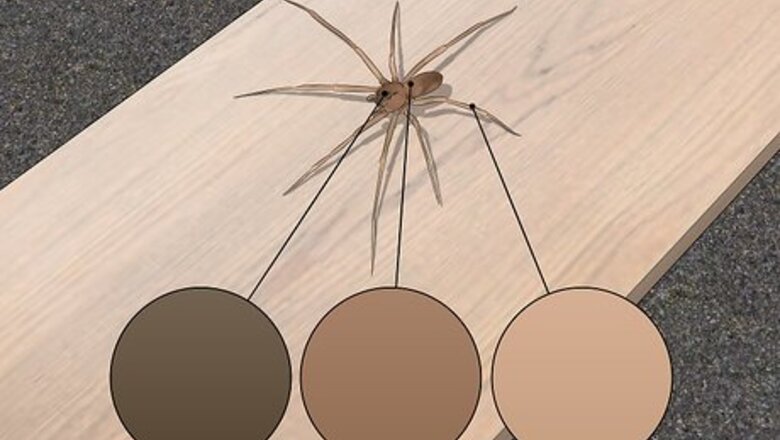
views
X
Trustworthy Source
Cleveland Clinic
Educational website from one of the world's leading hospitals
Go to source
Read on to learn everything you need to know about brown recluses, including what you should do if you think you've been bitten by one.
- Brown recluses are small spiders with light-brown bodies and legs, 6 eyes, and fine hair on their legs.
- True to their name, brown recluses favor sheltered, out-of-the-way places and typically aren't out in plain sight.
- Brown recluse spiders are native to the southeastern and midwest United States. If you live elsewhere, the spider is likely not a brown recluse.
Features of a Brown Recluse
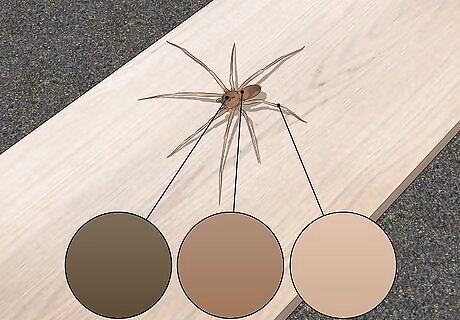
Light-brown body and legs The brown recluse is a solid light-brown color, typically similar to dirt or sand. Apart from the violin marking behind their heads, these spiders don't have any variation in color on either their bodies or their legs, including their undersides. If the spider has stripes or other markings on its body or legs, it's not a brown recluse. Spiders with darker abdomens or several different colors on their bodies also aren't brown recluses. For example, huntsman spiders and funnel weavers are often mistaken for brown recluses, but they have different colors on their bodies and legs.
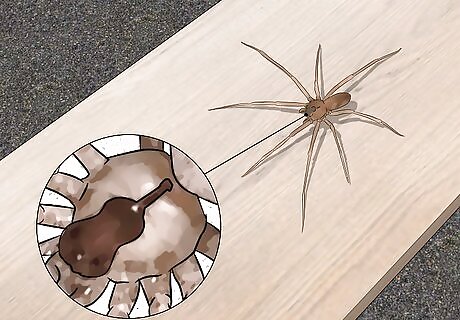
Violin marking This dark brown marking appears on the brown recluse's cephalothorax—typically people will just refer to this as the spider's back, although that's not completely accurate. The neck of the violin points toward the spider's body. The shape isn't always super well-defined, though, so it can be hard to spot. Other types of spiders have similar markings, so this alone isn't enough to guarantee you're looking at a brown recluse.

Six eyes The brown recluse's unique eye configuration is usually an easier way to identify them than other markings. While most spiders have 8 eyes, a brown recluse has only 6, arranged in 3 pairs—one directly in the center of their head with the other 2 pairs on either side. The eyes are so small it can be difficult to actually see them without a magnifying glass. If you're going to hold a magnifying glass up to a live spider, be careful! A woodlouse spider also has 6 eyes, but they're in a different configuration. Woodlouse spiders tend to be reddish with a dark-reddish brown front half, pale back half, and gray abdomen.
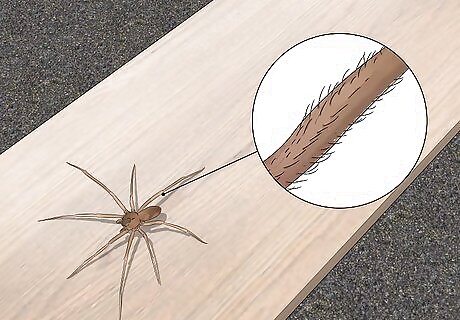
Fine hair Most spiders have spines on their legs, but brown recluses have only fine hairs. If you see spines, you're definitely looking at a different species of spider.
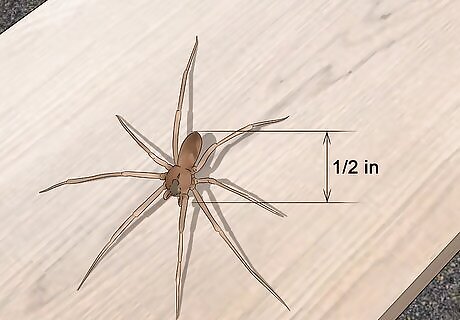
Small size A brown recluse's body doesn't grow much bigger than ⁄2 inch (1.3 cm) with its legs extended. If you've got a big, scary-looking spider, it's probably not a brown recluse. These small spiders can sit comfortably on the head of a US quarter, including their legs. If the spider is much larger, you're likely looking at a wolf spider.
Brown Recluse Habitat
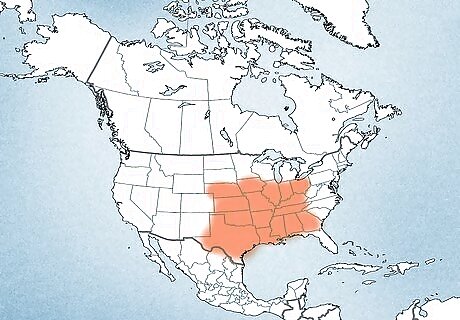
Southeastern and midwest United States Brown recluse spiders live primarily in 16 US states: Alabama, Arkansas, Georgia, Illinois, Indiana, Iowa, Kansas, Kentucky, Louisiana, Mississippi, Missouri, Nebraska, Ohio, Oklahoma, Tennessee, and Texas. If you don't live in these areas, chances are you'll never encounter a brown recluse spider. Brown recluse spiders have been found in large cities outside these areas, likely because they were hiding in something that was moved there.
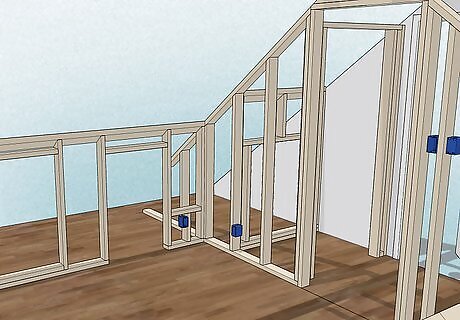
Dry, hidden spaces These spiders are called "recluses" because they tend to favor out-of-the-way places where they won't be disturbed. Generally, they're just not really interested in people and try to stay out of your way. Look for them in: Attics Dry basements Closets Sheds or barns Woodpiles Shoes Boxes of stored items
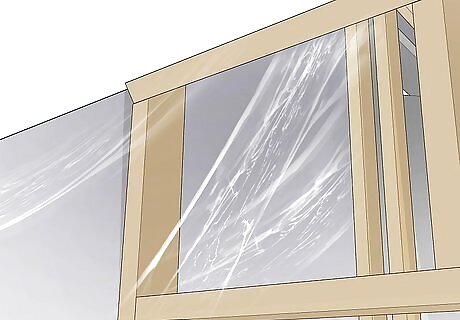
Loose, sticky webs Brown recluse spiders don't use their webs to catch prey—they go out hunting at night. Their webs are flat retreats in the bottom of boxes or corners, constructed to protect the spider and their young. The loose strands of the web are sticky to the touch and usually off-white or grayish in color.
Treating a Brown Recluse Bite

Wash the bite area immediately upon discovery. A brown recluse bite isn't going to hurt. In fact, it can take up to 8 hours before you even realize you were bitten at all. When you notice a bite, clean it carefully with soap and warm water. The area around the bite might become red or swollen within 3-8 hours after the bite. You might also feel a burning sensation. Apply an ice pack or cold compress to the site for 10 minutes to reduce swelling.
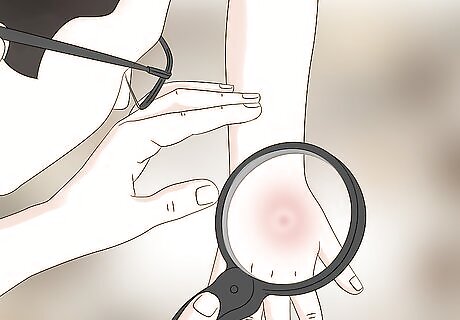
Seek medical treatment as soon as possible. When in doubt, call your doctor about any painful or swollen bite. Even if it's not a brown recluse bite, prompt medical treatment will keep it from developing into something more serious. Prompt medical treatment is especially important for small children and elderly adults or people with pre-existing medical conditions. Keep in mind that doctors aren't typically entomologists. They'll treat your bite but might not be able to tell if it was actually a brown recluse bite or something else. If severe, an ulcer will develop within 3-5 days after the initial bite. If the ulcer breaks down, it becomes a wound that can take months to completely heal.
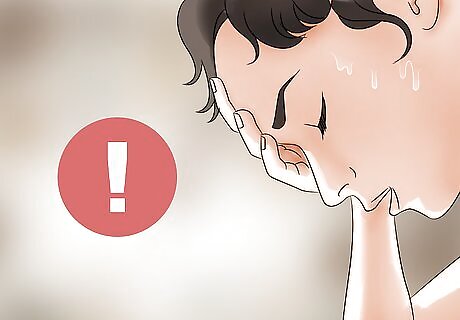
Monitor other symptoms, including fever and nausea. If you develop a fever or if the area around the bite appears infected, get emergency medical treatment as soon as possible. Even though this is likely a secondary infection, it's still a medical emergency. You need antibiotics to kill the infection and keep it from spreading. If not infected, most brown recluse bites heal completely within 3 weeks.


















Comments
0 comment